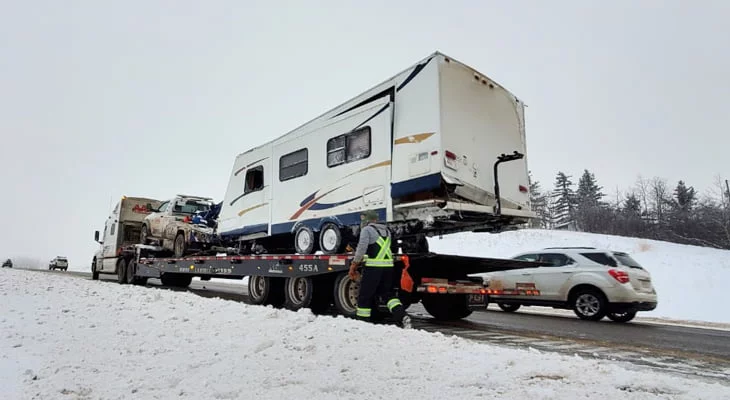In the bustling city of Mascot, where the metropolis meets the challenge of maintaining safety and fluidity on its roads, the need for effective emergency response strategies is not just paramount; it’s a lifeline for the community.
The integration of towing companies into the emergency response protocol can serve as a cornerstone for enhancing these strategies.
This integration, when executed strategically, can help in significantly reduce response times and improving the overall efficiency of emergency services.
This blog post delves into evaluating current emergency response times and protocols within Mascot about local towing services. It explores how the inclusion of towing services can play a pivotal role in revamping these systems for the better.
Mascot, with its complex network of thoroughfares, experiences its fair share of traffic incidents ranging from minor fender benders to major accidents.
The prompt clearing of these incidents is crucial in maintaining the flow of traffic and, more importantly, ensuring the safety of the city’s residents.
Current protocols involve multiple emergency services, including police, fire, and medical teams. However, the integration of local towing services often occurs as an afterthought rather than a coordinated effort from the get-go.
This misstep can lead to unnecessary delays in clearing the scene, undermining the efficiency of the overall emergency response.
The first step in enhancing emergency response strategies is to conduct a thorough evaluation of the current response times and protocols.
Data analysis can reveal critical insights into common bottlenecks within the system. For instance, the time it takes for a towing service to be notified and arrive on the scene can significantly affect overall response times.
By identifying these lags, strategies can be developed to streamline the process, such as creating a centralized communication hub that immediately notifies all relevant parties, including towing services, when an incident is reported.
The integration of local mascot towing services into the emergency response system can be approached from multiple angles to improve efficiency. A prime example is the implementation of a priority dispatch system.
This system categorizes incidents based on their severity and impact on traffic flow, allowing for the allocation of resources more effectively.
Towing services, equipped with this information, can prioritize their response accordingly, ensuring that the most critical incidents are addressed promptly.
Moreover, joint training exercises and regular coordination meetings can strengthen collaboration between towing companies and emergency response teams.
These initiatives foster a deeper understanding of each other’s operational capacities and limitations and help establish efficient protocols for joint response efforts.
This collaborative approach ensures that all parties are well-prepared to act swiftly and cohesively when an emergency strikes.
Another facet of integrating towing services into emergency response strategies is the utilization of advanced technologies.
GPS tracking systems, for example, can provide real-time data on the location of towing vehicles, enabling dispatchers to send the nearest available unit to an incident.
Likewise, digital platforms can facilitate the seamless exchange of information between towing services and emergency response teams, from the specifics of the incident to the status of the road clearance efforts.
This real-time communication not only helps in reducing response times but also minimizes the risk of miscommunication among the involved parties.
The benefits of such an integrated approach are manifold. Firstly, it significantly reduces the time it takes to clear incidents from the roads, which in turn minimizes traffic congestion and lowers the risk of secondary accidents.
Secondly, it enhances the overall effectiveness of emergency services, ensuring that those in need receive assistance with minimal delay. Lastly, it promotes a safer urban environment for both residents and visitors of Mascot.
In conclusion, the integration of local towing services into Mascot’s emergency response strategies is not just a beneficial move; it’s a necessary evolution in our approach to urban safety and efficiency.
By critically evaluating and improving current response times and protocols, and fostering a symbiotic relationship between emergency teams and towing services, Mascot can set a benchmark for effective emergency response strategies.
This collaborative effort will not only streamline operations but also reinforce the city’s commitment to the safety and well-being of its community.





Be First to Comment